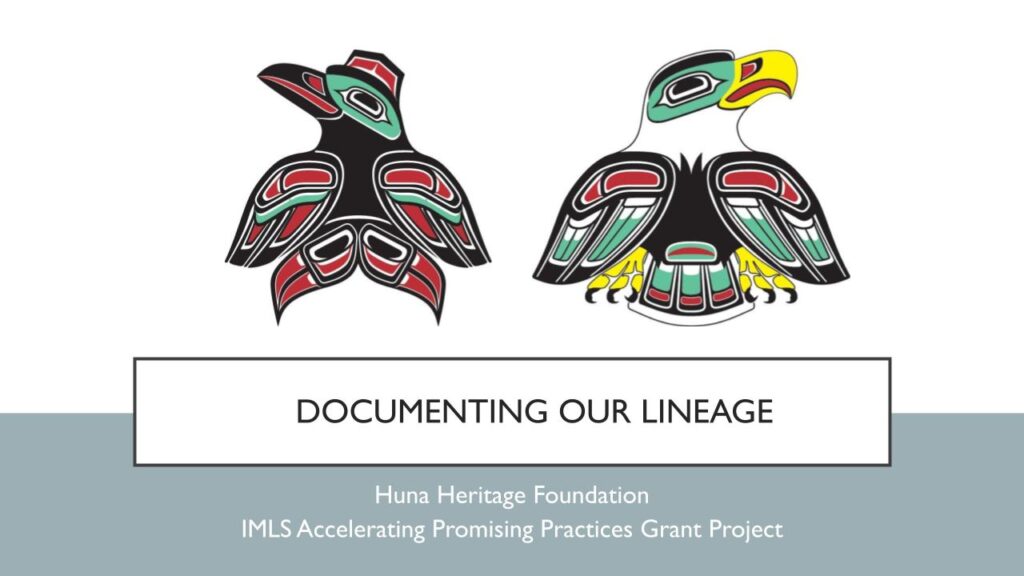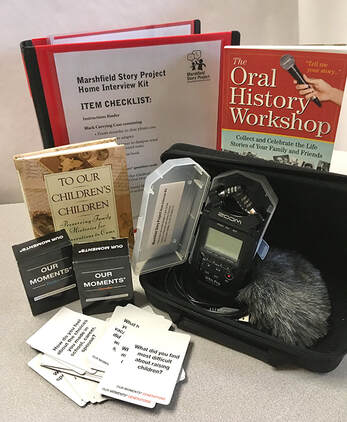IMLS APP Cohort: Celebrating two years of community memory work
In Fall 2019, WiLS began a cooperative agreement with the Institute for Museum and Library Services (IMLS) to mentor a cohort of ten small, rural, and tribal libraries around the country awarded grants for community memory projects. This summer, as they head into the home stretch of their grants, cohort members have shared short presentations in our monthly virtual meetings. We asked them to highlight key aspects of their community memory projects — a success they’re particularly proud of, a challenge and how they addressed it, or how they pivoted their project to accommodate the impact of COVID-19 on their library and community. Here is a summary of their “showcase” presentations.
Jimmy Pearson, Astoria Public Library (Astoria, Oregon)
Library director Jimmy Pearson conducted a live tour of the Astoria Public Library’s local history archives. Highlights included an introduction to the 1892 collection (their first library collection), a German-language bible from 1728 (the oldest book in their collection), a complete set of Harper’s Monthly Magazine from the Civil War period, and the Astoriana Collection. Other collection items of note include Herman Miller and Eames furniture, photo albums, wood cuts, and the newspaper and magazine collection. Pearson proudly revealed great progress made to organize, rehouse and label materials stored in “the vortex,” the basement area housing the archives. He also shared two of the outreach materials created for the project – a poster and bookmark highlighting project staff and work.
Amelia Wilson, Huna Heritage Foundation (Hoonah, Alaska)
Amelia Wilson, Executive Director for the Huna Heritage Foundation, presented an overview of the Documenting Our Lineage project and introduced Project Coordinator Mary Erickson, who conducted outreach to community members. Wilson explained how their project builds on information collected in the 1990s documenting Tlingit names. Wilson described how individuals and families receive and pass down moiety, clans, and houses; how they updated and organized this lineage information; and why it is critical to document these names for tribal community members. She discussed how they incorporated feedback from elders to create a useful resource and introduced work from a Huna graphic artist who created the layout and cover art for the print version of the clan lineage book. Finally, Wilson talked about privacy concerns related to sharing this resource within and outside the tribal community.

Christine Barth, Scott County Library System (Eldridge, Iowa)
Christine Barth, Reference and Technical Services Librarian for the Scott County Library System in Iowa’s Quad Cities region, shared a pre-recorded video showcasing the work of her project team. Project manager Nancy Youngbauer described facilitating events where community members were invited to use the library equipment to digitize their personal historical materials, including scrapbooks and photo albums. The library also conducted oral history interviews with residents including the first pharmacist in Eldridge, Iowa, who passed away shortly after participating. Barth shared project outputs including the “Grandparent Book,” an activity book designed for grandparents and grandchildren to complete together to document their family history and “Generation to Generation: A Genealogy Guide for Kids.” Barth also talked about shifting to one-on-one appointments with patrons to use the library’s digitization equipment and proactively collecting materials from the sixteen small towns and unincorporated communities in the county. Project director Sarah Carlin provided a demonstration of their online collection in the Internet Archive.
Tracey Hambleton, Jaquith Public Library (Marshfield, Vermont)

Project director Tracey Hambleton offered an update on the Jaquith Public Library’s Marshfield Story Project. Initial project activities included a workshop with the Vermont Folklife Center, purchasing scanning equipment, and video interviews with community members documenting the history of Marshfield and their memories of Town Meeting Days. Hambleton shared how they shifted their project plans due to COVID-19 with help from the Vermont Folklife Center’s Assistant Director, Andy Kolovos. Hambleton and Kolovos discussed the challenges of digitizing and providing access to the Linda Goldberg tapes, a collection of over 500 interviews conducted by a former resident of Marshfield between 1973-2003, now housed at the Vermont Folklife Center. They described ongoing negotiations with the donor regarding public access to the digitized interviews and the importance of digitizing and preserving the tapes, even if they are not currently accessible online. Hambleton also shared the library’s contributions to Digital Vermont, the Vermont Historical Society’s online collection.
Emily Chameides, Hudson Area Library (Hudson, New York)
The Hudson Area Library in New York’s Hudson Valley used their grant to expand on an existing partnership with the Oral History Summer School (OHSS). The library and OHSS are working together to build a networked digital archive encompassing four collections: the OHSS’s archive of oral histories and other recorded sounds, the library’s own local history content, the Kite’s Nest youth center, and the Black Legacy Association of Columbia County (BLACC). Library director Emily Chameides shared a preview of the first online component of the collaboration, the Community Library of Voice and Sound. The library is also offering public programs using oral history to promote community dialog. They were able to host an in-person workshop on oral history summary writing in February 2020 and then pivoted to virtual events. More public programs are to come this fall, along with a partnership with community radio station WGXC.
heather diaz, Forbes Library (Northampton, Massachusetts)
heather diaz of the Forbes Library in Northampton, Massachusetts, spoke frankly about the challenges of managing a major federal grant as an early-career librarian, particularly during the COVID-19 pandemic. She described how she navigated significant changes to the original project plan in response to building closures and reduced capacities of community partners. Instead of building a memory lab in the library where patrons could digitize their own materials, she implemented a “concierge reformatting” process to do that work for them on a drop-off, on-demand basis. One of the biggest outcomes for the library was a successful collaboration with Smith College and Simmons University students, who interviewed local residents about Northampton’s Pride Parade, held annually since 1982. The library received guidance from Massachusetts’ Digital Commonwealth program to develop a metadata framework to describe the interviews, and an Omeka exhibit to share the content is forthcoming.
Amanda McLaren, Benzonia Public Library (Benzonia, Michigan)
Amanda McLaren, director of the Benzonia Public Library in rural Michigan, discussed the Remembering Benzie project, which worked with two cycles of high school student interns to record, edit and share video oral history interviews with community members. The first year of the project, with four student interns, was an important learning experience that made year 2 easier, even in spite of pandemic-related complications with student recruitment and scheduling. Amanda shared the Remembering Benzie YouTube channel, which features student-created video interviews (both full-length versions and short clips), training materials created with the University of Michigan, and info about each student. Amanda noted that when she realized how many people the videos were reaching outside of the local community, particularly the veterans’ interviews, she revisited their descriptions in YouTube, updating the metadata to provide more detailed and consistent contextual information.

Bonnie Roos, Jamestown S’Klallam Tribal Library (Sequim, Washington)
Tribal Librarian Bonnie Roos, along with Archival Assistant and Videographer Brandon Taft, shared a prerecorded video to showcase the work of the Jamestown S’Klallam Tribal Library in coastal Washington. Their community memory project incorporated archival images and sounds into digital stories. These short video segments cover historical topics selected by tribal advisors, including fishing, the Shaker church, and medicinal plants, as well as twelve videos about each month of the year, to complement the annual Klallam Language calendar. Although COVID resulted in staffing reductions and a shift to virtual events, they reported that moving programs online was an opportunity to get comfortable with Zoom – a first Zoom presentation from Tribal Historic Preservation Officer David Brownell had 12 attendees, while later virtual events drew up to 130 participants. The project team wrote: “When the pandemic turned life upside down, we adapted and were able to provide the support and content that our community needed most.”
Chris Brown, Pella Public Library (Pella, Iowa)
Over their two-year grant period, the Pella Public Library created the Pella Community Memory Database, an online collection of digitized photos and documents from the library, the Pella Historical Society, and various local donors. Assistant Library Director Chris Brown offered a tour of the database, built in CONTENTdm. The site showcases a range of topics that document this Dutch immigrant community, including church histories and family history files. Chris also shared how he included street addresses and city block numbers as controlled vocabularies in photo metadata, enabling linkages across photos to show how buildings and locations have changed over time.



Comments are closed.